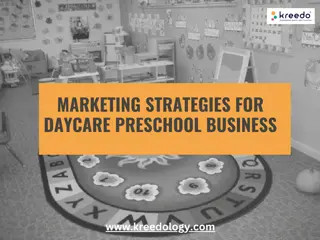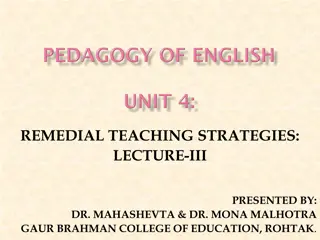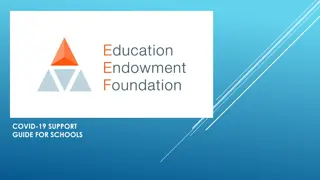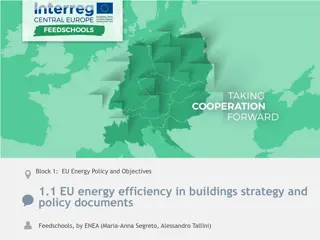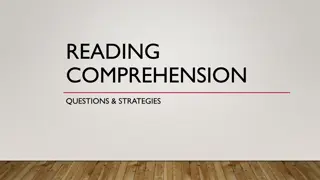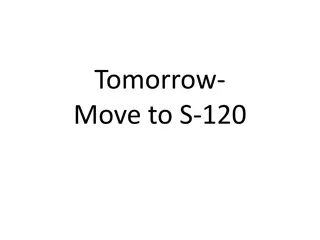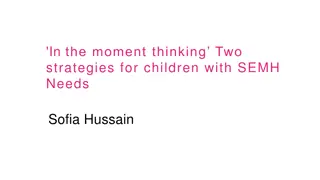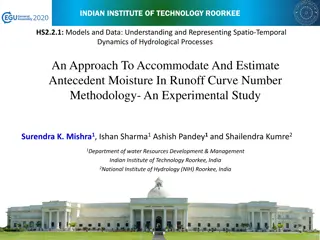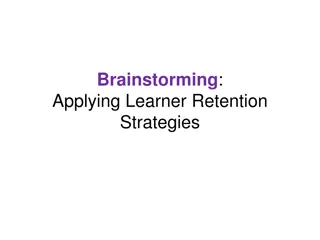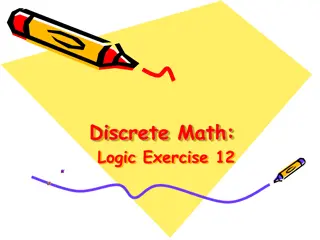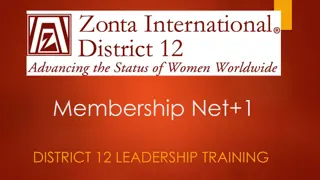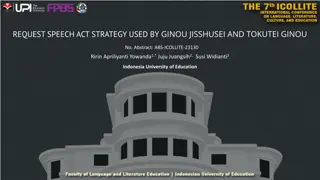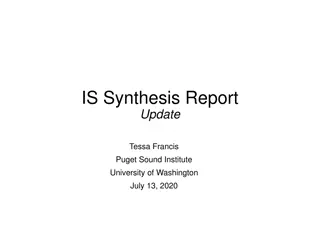ANTECEDENT STRATEGIES
Learn about antecedent strategies presented by Eileen Webster, BCBA, including what antecedents are and how they can help decrease problem behaviors. Discover the importance of positive attention, predictable schedules, praising behavior, and effective pairing techniques in managing classroom behavior. Enhance student outcomes through research-backed strategies for improving behavior, attention, and academic performance.
Download Presentation

Please find below an Image/Link to download the presentation.
The content on the website is provided AS IS for your information and personal use only. It may not be sold, licensed, or shared on other websites without obtaining consent from the author. Download presentation by click this link. If you encounter any issues during the download, it is possible that the publisher has removed the file from their server.
E N D
Presentation Transcript
ANTECEDENT STRATEGIES Presented by: Eileen Webster, BCBA Salina USD#305/CKCIE
WHAT IS AN ANTECEDENT Something that occurs immediately before a behavior. Antecedent Strategies: Interventions established prior to behavior occurring to decrease the likelihood of the problem behavior and increase the likelihood of the wanted/appropriate/target behavior.
5 BEST CLASSROOM MANAGEMENT TOOLS 8:1 Ratio of Positive Attention Predictable Schedules & Routines Pairing with the student Directly Teach and Practice Positive Behavioral Expectations Directly Teach and Practice Peer-Related Social Skills
PRAISE THE RESEARCH Research has demonstrated that increased praise can lead to increases in the following: Students correct responses Work productivity and accuracy Academic performance On-task behavior and attention Compliance Positive comments about self Cooperative play Simonsen, Fairbanks, Briesch, Myers, & Sugai, 2008
WHAT IS PRAISE WORTHY Praise should be given in direct statements that are positive behavior focused: Praise should not be basic or generic and should not be negative behavior focused: I love how focused you are on your math right now. Thank you for staying in your seat during independent work time. Wow, look at how kind you are being to your friends. Good Job Way to go You haven t shouted out over the class in several minutes
A HELPFUL TOOL TO KEEP YOU AND YOUR PEERS IN CHECK
Recommend 75% of every interaction when first pairing. Non-verbal ( ooooohs and ahhhs ) and declarative language ( wow, this if fun! thank you and I love playing cars! ). Student led activities Make it more fun because you are part of the activity. Declarative language is language that asks for nothing of your student. Avoid asking questions or making requests during pairing. Don t let the student leave the pairing areas with a toy top lay alone. The student can have access to the item as long as you are part of the activity. PAIRING This is done by consistently pairing yourself with your student s favorite things. Pairing causes the value of these reinforcing items to be transferred to your student s perceived value of you.
ENVIRONMENTAL FACTORS THAT CAN AFFECT BEHAVIOR Reducing wait time Providing a transition notice/cue Teacher/staff proximity An appropriate peer buddy Providing easy access to materials Individualized schedules (Structured Teaching) Routines within Routines (Structured Teaching)
INSTRUCTIONAL STRATEGIES THAT IMPROVE BEHAVIOR Evaluate and adjust difficulty level of the work Evaluate and adjust length of work Provide high-interest material Vary preferred materials Ensure students have the prerequisite skills Teach expected behaviors Prompt expected behaviors Instructional Pacing Opportunities to Respond (Too much? Too Little?)
INSTRUCTIONAL STRATEGIES Choice Provide Novelty Students are provided opportunities to independently make decisions between two or more options: Embedding novelty to instruction can increase a student s motivation: Tasks to complete Sequence of work tasks Materials to use Where to complete work When to complete work With Whom to complete work Different Materials for repeated activities Make same skill look different Use high-interests Rotate Materials often
Can be used with similar tasks (e.g., spelling mastered words with new words) or with dissimilar tasks (e.g., spelling unlearned words with labeling known animal pictures). Determine the ratio of mastered tasks with new or unlearned tasks by mixing and varying tasks (80/20). Another strategy is to place easier or mastered questions or equations at the beginning of a task and gradually increase task difficulty. Provide more reinforcement for correct responses on the new unlearned tasks, than for correct responses on the known tasks. Differentiate your reinforcement for new tasks vs. mastered tasks. INTERSPERSING Mixing mastered (easy) tasks in with new or unlearned (difficult) tasks. Fade in new or unlearned (difficult) tasks.
Identify low-p behaviors. Defined as complying with directives 50% or less. Identify high-p behaviors. Defined as complying with directives 80% or better. Develop a list and vary the high-p requests given. Avoid repeating identical high-p chains. Deliver 3-5 high-p requests rapidly just prior to administering a low-p request. Deliver verbal or gestural praise for each response to a high-p request. Deliver the low-p request within 5 seconds of reinforcing a response to the last high-p request. Delaying the low-p request can decrease the likelihood of compliance. Consider the student s age and functioning level. Program to fade out high-p requests slowly. Fro 3-5 high- p requests to 1 high-p request. Record data on the target low-p behavior to monitor progress. BEHAVIOR MOMENTUM A strategy for increasing the probability of compliant behavior by asking a student to do two or three things they typically will likely do with compliance and then following these requests with a request for behavior the student typically does not want to do.
States that any high- probability activity may serve as a positive reinforce for any low-probability activity. PREMACK PRINCIPAL (GRANDMA S LAW) Student will engage in activity they don t prefer knowing they can get to the activity they do prefer next.
Identify the context and the predictable behavior or concern. Ex: Running in the hallway Specify expected behaviors. Ex: Walk in the hallway. Modify the context. Ex: Visual Supports Conduct behavioral rehearsals Ex: Students should practice walking in the hallway and be reminded about hallway behavior prior to any transitions. For a student who runs frequently, give reminders or additional instructions using visual supports prior to the transition. Provide reinforcement for expected behaviors Prompt expected behaviors before performance. Monitor PRECREATION Teacher reminds or teaches the student the expectations or rules prior to the start of an activity to prevent an error.
Teacher prompts, ALL students responds. Eliminates the hand raising tradition where only students that raise their hand and actively participate learn the material and all other students are left behind. Helps create a culture of learning for all students, even those that don t normally participate in class. Creates the opportunity for reinforcement of that responding for every student in the class. Encourages and strengthen class engagement. When an entire class or students is required to respond to every question a teacher presents, each student s attention is reinforced along with the actual response to the lesson. The teacher can also quickly identify when the class struggles to answers, which alerts them that they may have failed to present the question or information clearly or the class required further practice to master the subject. CHORAL RESPONDING Entire class responds in unison to questions or prompts presented by the teacher with feedback immediately provided to the entire class.
OTHER TEACHING STRATEGIES Reduce Learner Error Fast-Paced Instruction Teach to Fluency Correct and quick, as opposed to just correct, decreased escape behavior because they reach reinforcement faster. Students who learn how to respond quickly and accurately tend to exhibit greater endurance for longer duration sessions without problem behavior. Short, inter-trial intervals (ITI) of instruction can reduce problem behavior and student errors because opportunities to reach reinforcement comes quicker and more often. This will lower the escape behaviors and will allow the student to correlate instruction with positive outcomes. Teaching Methods: Errorless Teaching Shaping Most-to-least prompting 0 Time delay Prompting Chaining
WHAT NOT TO DO! DO NOT remind the student what they are working for or flash the reinforcer when they are not responding at the table or when they are starting to exhibit problem behaviors. It may temporarily get the students attention back but it will increase the future frequency of the negative behavior. DO NOT present easier demands if the student is not responding to the demands you are presenting. DO NOT wait for the student to look at you before you present demands. DO NOT look for a better reinforcer when the student is not responding to your demands or when the student leaves the table setting. DO NOT make the student wait while you determine which demand you are going to present next. Give a reinforcer and get your materials sorted out for the next run through. DO NOT reinforce the student more often when he/she is engaging in weak responses or escaping, or engaging in self-stimulatory behaviors. You want to stop teaching and reinforce more often when the student is responding well to your demands. DO use extinction when the student is not responding to your demands. Be sure that you use extinction by continuing to present demands of the same difficulty level as the one the student didn t respond to. When using extinction be careful and reinforce as soon as good responding starts up again. Always go back and assess what went wrong in your teaching so you can prevent the problem from occurring again. DO NOT think that extinction equals ignoring.
REFERENCES & RESOURCES TASN ATBS- It s All About You: Using Instructional Strategies to Improve Student Outcomes Training Part 1 PaTTAN Autism Initiative ABA Supports Resources- Instruction- Intensive Teaching Simonsen, Fairbanks, Briesch, Myers, & Sugai, 2008 TASN ATBS- Summer Institute on Structured Teaching
OTHER RESOURCES Applied Behavioral Analysis for Teachers by Alberto & Troutman It s Time for School by Leaf, Taubman & McEachin Blind Spots by Kimberly Nix Berens, PhD.







